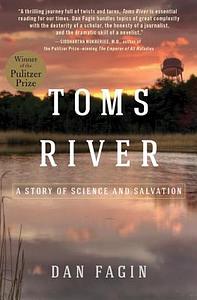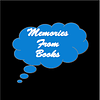Take a photo of a barcode or cover
This is not a pick me upper or remotely positive book. It is a deep dive into terrible companies getting away with terrible shit because of terrible government. But it is important; whether you care about New Jersey or not, it is crucial to know what companies are allowed to do to your air, soil, and drinking water, without a second thought as to what it could be doing to those who live around it. My only complaint, and why I almost gave it a 3 star, is because it is a slog. For some, that might be a positive. It goes really deep into history and research of cancer and places. However, that means that most every chapter starts in ancient Mesopotamia and ends just an inch closer to what you actually wanted out of the paragraph.
informative
medium-paced
Fascinating read on a case study of childhood cancer and ground and air pollution. The story wove in and out of a history of environmental concerns, studies, and research, as well as legal battles. It was heavy on the Science, without being un-readable to someone without a huge Science background.
informative
medium-paced
slow-paced
dark
informative
inspiring
reflective
medium-paced
This is a compelling story, clearly written, and very instructive in epidemiology and the difficulties in proving "cancer clusters." Now, see, I've made it sound boring. Believe me, it is anything but boring.
I grew up not far from Toms River and remember hearing vaguely about this. So I was curious to learn more. This is an INCREDIBLY detailed book. From the details about the chemicals - from creation to appearance in Toms River - to the study of cancer to the makings of different studies (including statistical significance), no stone was left unturned here. But through it all, the author made an effort to put faces to the science, sharing the stories of the children and their families and those who fought for change along the way.
I have an appreciation for everyday heroes fighting against pollution. I LOVED Erin Brokovich. But I’d fall asleep in a chemistry class. This book was written with people like me in mind. It tells the tale of how billions of gallons of industrial pollution found its way to Toms River, New Jersey, and the impact it had on the community over decades. Throughout Fagin intersperses background on the histories of dye production, biostatistics, and cancer epidemiology. By the end I was reading about complex hydrology modeling and the importance of confidence intervals in cluster studies thinking whoa, I have learned so much.
Fagin works it all in by never losing sight of the characters, of which he introduces you to many-- Greenpeace activists, an alarmed pediatric oncology nurse, and frustrated state government bureaucrats. But is also a story of a community that seems on the verge of tearing itself up several times over how far to push health concerns without threatening economic growth. There are also years and years where the community returns to the daily grind without knowing what is in their drinking water (which, seriously- who among us hasn’t).
If you want a triumphant Hollywood ending you will be disappointed. It is a long and arduous journey to piece together the health effects, if any. Fagin makes the case here that Toms River wasn’t due to government working effectively, but instead a mix of perseverance and chance encounters that enabled dots to be connected. But even by end the dots aren’t as firmly connected as you would like. Fagin notes this world is not one of clear rules and throwing-the-book-at-them consequences, but quieter and grayer area of confidence intervals and mediation.
Basically I think everyone should read this book, and many more books like this one should be written. Fagin leaves us on a chilling thought that cancer clusters are likely more common than we realize and we don’t really have the tools to detect them. Also rather than going away, the disposal of these toxic chemicals has shifted from places like New Jersey to other countries. The work of the Erin Brokoviches and Dan Fagins of the world marches on.
Fagin works it all in by never losing sight of the characters, of which he introduces you to many-- Greenpeace activists, an alarmed pediatric oncology nurse, and frustrated state government bureaucrats. But is also a story of a community that seems on the verge of tearing itself up several times over how far to push health concerns without threatening economic growth. There are also years and years where the community returns to the daily grind without knowing what is in their drinking water (which, seriously- who among us hasn’t).
If you want a triumphant Hollywood ending you will be disappointed. It is a long and arduous journey to piece together the health effects, if any. Fagin makes the case here that Toms River wasn’t due to government working effectively, but instead a mix of perseverance and chance encounters that enabled dots to be connected. But even by end the dots aren’t as firmly connected as you would like. Fagin notes this world is not one of clear rules and throwing-the-book-at-them consequences, but quieter and grayer area of confidence intervals and mediation.
Basically I think everyone should read this book, and many more books like this one should be written. Fagin leaves us on a chilling thought that cancer clusters are likely more common than we realize and we don’t really have the tools to detect them. Also rather than going away, the disposal of these toxic chemicals has shifted from places like New Jersey to other countries. The work of the Erin Brokoviches and Dan Fagins of the world marches on.
This was an incredible book. It would make for a great class - it has everything from the bureaucracy, iron triangle, the legal system, science and how we arrive at scientific conclusions to the psychology of decision making and theory of fairness and retribution. Fascinating and horrifying, having grown up near there.
Toms River: A Story of Science and Salvation by Dan Fagin is a very detailed and well researched account of the cancer cluster identified in Toms River, New Jersey, in the 1990s. This book tells the story of this cancer cluster - from the history of the chemical plant to the scientific studies; from personal stories of to the corporate structures involved.
Read my complete review at: http://www.memoriesfrombooks.com/2014/06/toms-river-story-of-science-and.html
*** Reviewed for GoodReads First Reads program ***
Read my complete review at: http://www.memoriesfrombooks.com/2014/06/toms-river-story-of-science-and.html
*** Reviewed for GoodReads First Reads program ***



